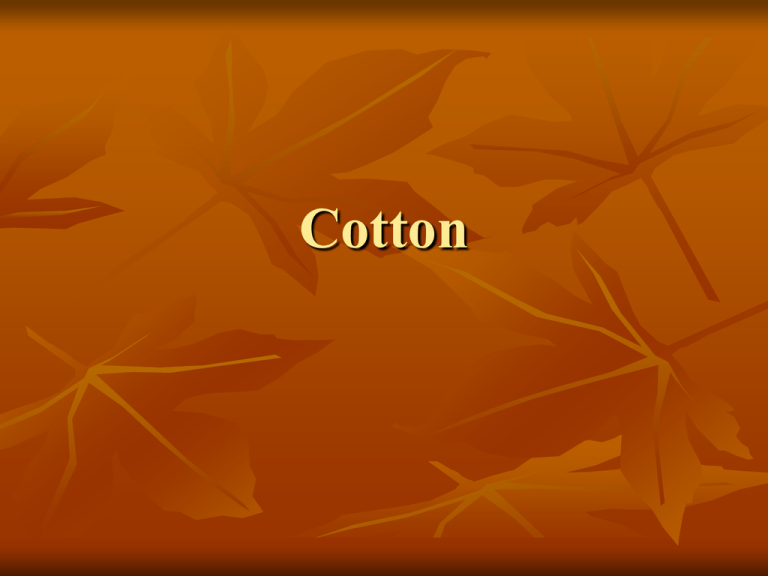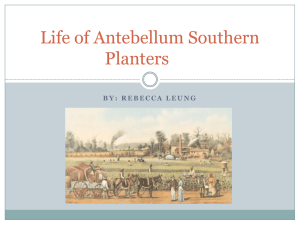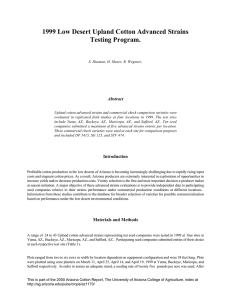Cotton
advertisement

Cotton Leading Countries 1. 2. 3. 4. 5. China USA India Pakistan Uzbekistan Botany A perennial Coldest temps. 650F Height = 2-5 feet Deep tap root Bolls Squares Heat Units Planting to emergence Emergence to squaring Emergence to first bloom Emergence to first open boll Normal crop production 50 450 780 1,730 2,800 How to calculate heat units: Daily low + daily high ÷ 2 – 600F = heat units Varieties Acala Pima Cultural Practices Tillage Planting Rip Disc Seed bed (row spacing – 38” – 40”) Depth, ¾ - 2 “ 2-3 plants per foot Crop Rotation Follows Alfalfa or other legume Fertilization • • • • • • N, 80-120 lbs./ac P, 18-20 lbs./ac K, 18-20 lbs./ac Note; to much N can cause rank growth. Also amounts will depend on the soil type. In addition, 60% of the mineral nutrients are taken up between squares and boll formation. Irrigation • • • The goal is to keep 50% field capacity or higher through out the growing season. You will apply, depending on the soil texture, 2-3.5 acre feet per season. A plant during peak season can take up to .25 - .45 of an inch of water a day. Growth and Development • • • • • Cotton matures 150 days after planting. It emerges 7-10 days after planting. Blooms early July. First bolls open mid to late August. Note: to prevent rank growth one might apply a growth regulator such as; Pix, Mepex, Topit, Mepichlor, ect.. Weed management • • • • Early season weeds reduce yields due to the competition for nutrients and light. Late season weeds cause problems in harvesting and quality. Common herbicides; Prowl, Poast, Lorax, Fusilade 2000, & Round-up in Round-up ready varities. Mechanical cultivation is a common practice. Diseases Fursaruim Wilt Vericilium Wilt Bacterial blight Cotton-boll rots Root-knot nematode Root rot Insects Pink Bollworm Boll Weevil Aphid Lygus Mites Harvesting Defoliation Why do we defoliate? Picking Modules How does the cotton picker work? Ginning The cotton fibers are removed from the seed. There are two different methods used and they depend on the variety. Grades of cotton Grades are determined on; Color Ginning preparation Maturity Leaf and other foreign matter There are 9 basic grades of cotton which are broken into 43 different grades Quality Grades These are determined by; Fiber length (staple) measured by a fibrograph Length uniformity, measured by a high value instrument Fiber strength, measured by a high value instrument Fiber fineness and maturity, measured by a micronaire instrument. What is city cotton? Terms Square Boll Lock Lint Tagging Rank growth City cotton Cotton seed Seed cotton Linters Bale Nip Nap Hue











